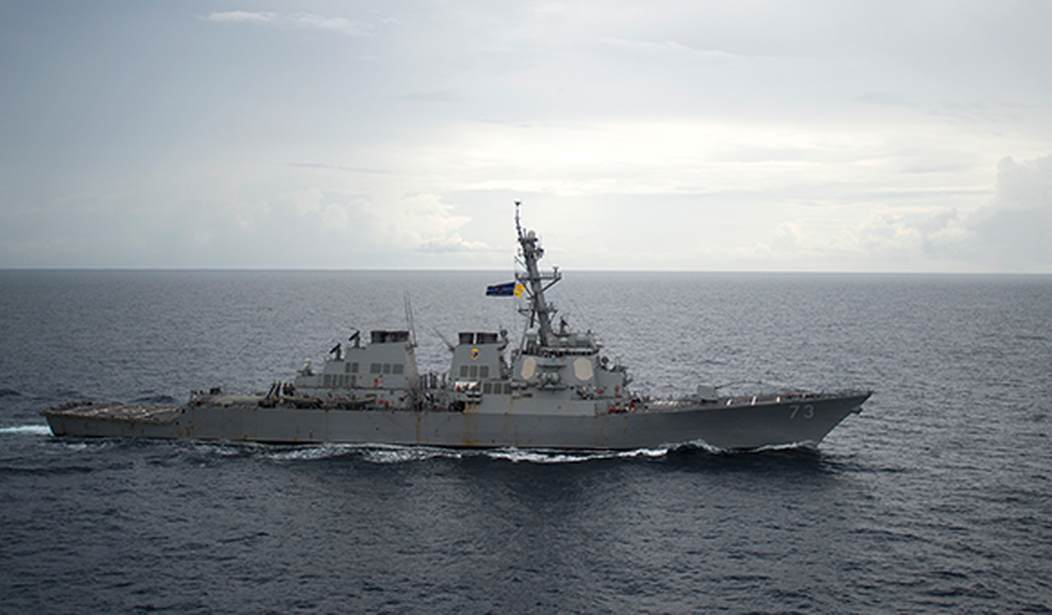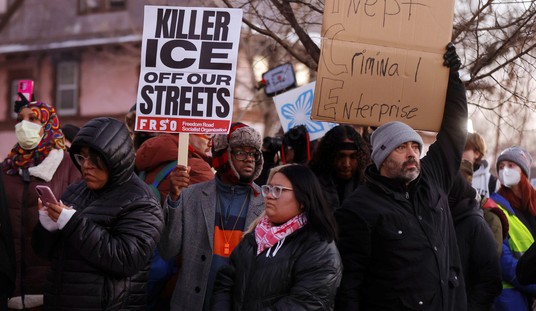In addition to the hot conflicts in the Eurasian landmass and the Middle East, a latent cold war has been brewing in the seas of the Orient for many decades.
Each year, as Chinese military and economic capacity nears closer to parity with the United States, the cold inches towards hot.
Related: Politicians and Multinational CEOs Created America's Top Geopolitical Menace
Via CBS News (emphasis added):
Over the past two years, tensions have escalated precariously in… the South China Sea — the waters off the western coast of the Philippines where an international tribunal ruled the Philippines has exclusive economic rights. But China claims almost all of the South China Sea, one of the world's most vital waterways through which trillions of dollars in goods flow each year. To assert its claims, China has been using tactics just short of war* — leading to violent confrontations. The United States has a mutual defense treaty with the Philippines, which could mean American intervention. It's been called "the most dangerous conflict no one is talking about."
*See: CCP unrestricted warfare doctrine
Expansionist China, after having almost totally absorbed the previously semi-autonomous Hong Kong region, has long coveted a forced reunification of Taiwan.
It seeks total control over the South China sea.
It’s got a longstanding score to settle with Japan dating back to World War II and even before. East Asians have a long memory, and they haven’t forgotten the Rape of Nanjing.
The only limiting factor to China’s undeniable expansionism has been the deterrence of arguably the only military power greater than the Middle Kingdom— the United States.
Related: Trump USDA Secretary Commits to Terminate CCP Gain-of-Function Partnership
That deterrence is now significantly limited, as the U.S. has re-deployed assets in the region to the Middle East, seemingly in preparation for a war with Iran — which, if the rhetoric from proponents of military action is to be taken seriously, is increasingly looking like a much costlier and more time-consuming regime change operation than the initially outlined goal of merely targeting the country’s illicit nuclear facilities.
Via The Week (emphasis added):
The raging conflict [in the Middle East] is expected to intensify further, with Iran appearing unrelenting and unwilling to negotiate to end the tension yet by saying that it is preparing for “the largest and most intense missile attack in history on Israeli soil”.
In a significant development, the US has rushed to deploy forces in West Asia, with the USS Nimitz carrier strike group set to reach the conflict-torn region soon from its earlier deployment in the South China Sea… so as to be closer to the theatre of war in order to “provide options to defend US assets and interests.”
Taking advantage of the situation, the Chinese navy, for the first time ever, placed aircraft carriers beyond the so-called First Island Chain, traditionally regarded as the de facto limit of Chinese power projection in the Pacific.
Via Zona-Militar (emphasis added):
The Chinese Navy… deployed its aircraft carriers Liaoning and Shandong into the Pacific—pushing even farther beyond the First Island Chain outlined by the U.S. as part of its containment strategy—Japan’s Self-Defense Forces (JSDF) continue to closely monitor and track the deployment of the Chinese force. Alerted by the transit of the Chinese vessels through waters near its coasts, Japanese elements confirmed the presence of the Chinese ships as of June 8 and are still tracking them as they return to their respective ports…
Earlier JSDF reports revealed that China had deployed its carriers with substantial escorts forming their respective Carrier Strike Groups. In the case of the Liaoning, the force reported it was accompanied by the cruiser CNS Wuxi (104), the destroyer CNS Tangshen (122), and the fleet oiler CNS Hulunhu (901). For the Shandong, the JSDF observed the presence of the Type 055 destroyer Zunyi, the Type 054A frigates Yuncheng and Hengshui, along with a Type 905 replenishment ship…
This marks the first time the People’s Liberation Army Navy has sent two of its three aircraft carriers beyond the First Island Chain. This deployment sends a bold message about China’s growing naval capabilities—one seemingly directed at the United States, which defines the symbolic First Island Chain as stretching from the southern tip of Japan to the waters between Malaysia and Vietnam. A Second Island Chain also exists, extending from Japan to Papua New Guinea.
It’s not just the ships; “Chinese fighter jets have done hundreds of landings and take-offs from the carriers,” with some coming dangerously close to Japanese military assets.
Via BBC (emphasis added):
A Chinese naval drill near Japan has sparked concern from Tokyo, which in recent days lodged a protest with Beijing and made the rare decision to publicly disclose Chinese military movements.
In the last few weeks China's two aircraft carriers, the Shandong and the Liaoning, have been conducting simultaneous drills in the Pacific, in an unprecedented move.
Chinese fighter jets have done hundreds of landings and take-offs from the carriers. A few came close to Japanese surveillance planes, prompting Tokyo to convey its "serious concerns" to Beijing.
China has said its activities are consistent with international law and accused Japan of conducting "dangerous moves".
On Tuesday, the Japanese defence ministry released a map tracing the Chinese aircraft carriers' daily positions since 25 May. Japan does not usually disclose details of foreign militaries' movements.
It shows both carriers coming close to Japanese islands, and at times sailing through Japan's exclusive economic zone.
Likewise, in the South China Sea — arguably the world’s greatest hotspot beyond Eastern Europe and the Middle East — China has been saber-rattling with virtually every one of its neighbors, including the U.S.-aligned Philippines and Vietnam.
Via Reuters (emphasis added):
China's military held joint sea and air patrols in the South China Sea on Saturday, a spokesperson for the People's Liberation Army's Southern Theater Command said.
Spokesperson Tian Junli said in a statement on Sunday that the Philippines has courted countries outside the region to organise "joint patrols" and "raised security risks" in the region.
"The theater command forces remain on high alert, resolutely safeguarding China's national sovereignty and maritime rights," he said, adding that "all military activities that seek to stir up trouble in the South China Sea or create flashpoints are fully under control"…
China claims almost the entire South China Sea, including parts claimed by Brunei, Indonesia, Malaysia, the Philippines and Vietnam.
War in the Pacific is seemingly inevitable at this point, likely kicked off by the annexation of Taiwan and the backlash that will trigger from China’s neighbors worried that they’ll be next.
The only question is when.









